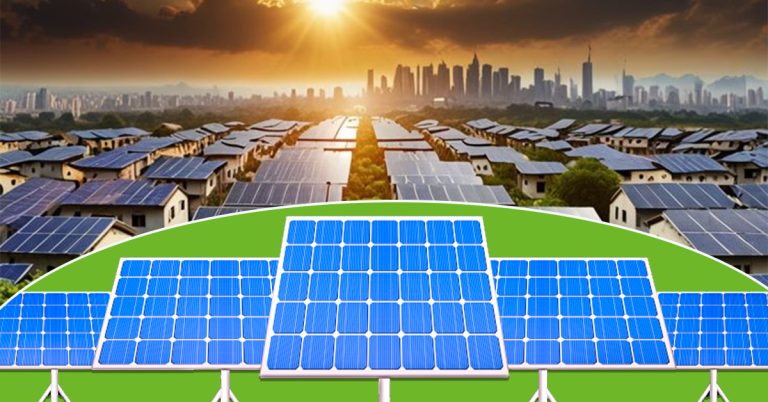With the increase in energy costs, aging infrastructure, and climate change, many people are turning toward renewable sources, one of them being solar panels.
If you are thinking of installing a solar system in your house, you must have been thinking, “How many solar panels do you need?” The fact is that there is no one-size-fits-all answer to that.
There are many factors that determine how many panels will power your house. In this guide, we will walk you through the complete calculation process to give you a solid estimate.
30-Second Summary
Every homeowner considering solar installation has the question, “How many solar panels do I need?” In this guide, we explore the answer.
You will discover the step-by-step calculation of the number of panels needed for your house. Additionally, learn about all the factors that impact this number, common mistakes to avoid, and helpful tips to optimize your solar system.
Why is there No One-Size-Fits-All Answer?
Every house has different energy consumption levels. A family that has central air conditioning, an electric vehicle, and high appliance usage will consume more energy than a small apartment with modest energy use.
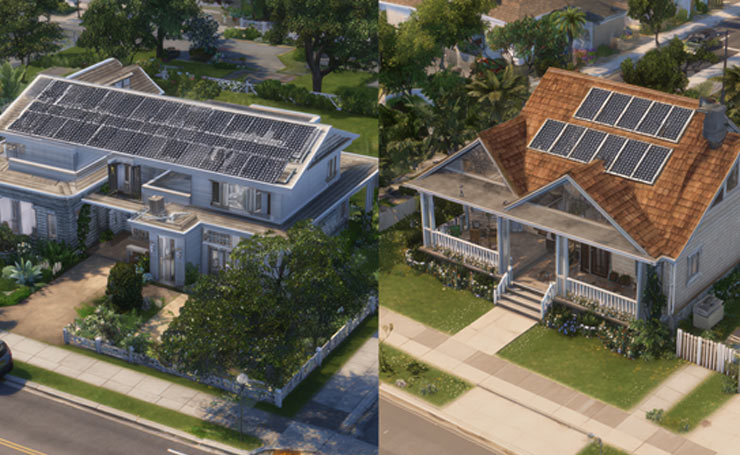
An average home needs 15 to 22 solar panels to cover its electricity use. However, your exact number can be more or less, depending on your roof space, sun exposure, and efficiency.
Undersizing your system will make you dependent on the grid, and oversizing will result in unnecessary costs. Therefore, knowing your accurate solar sizing is crucial.
How to Calculate the Number of Solar Panels Needed
Below is a step-by-step calculation of the solar panels needed for house.
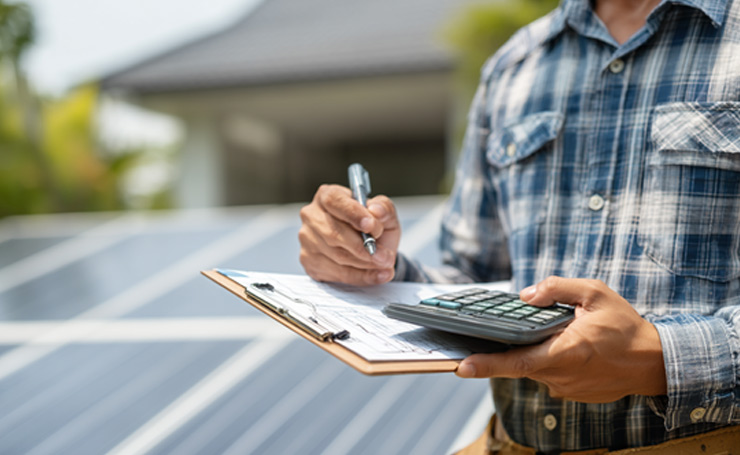
Step 1: Calculate Your Energy Consumption
You simply need your electricity bill to see how many solar panels are needed to power your house. Check your monthly kWh usage (kilowatt-hours) on the electricity bill and multiply it by 12. The answer is your annual energy consumption.
For example, if you use 1000 kWh per month, the annual consumption will be 12,000 kWh. However, it is important to keep your future needs in mind during solar panel sizing.
If you are planning to add an EV, a central heating system, or expand your household, factor in this extra demand. Adding a 10 to 20% margin ensures that you do not undersize your system.
Step 2: Understand Peak Sun Hours
Your location plays a major role in solar system size calculation. Basically, the solar production is measured in peak sun hours (PSH), which are the equivalent hours per day when the sun’s intensity reaches 1,000 W/m².
Houses in sunny regions get 5 to 6 PSH every day, while homes in cloudy regions get 3 to 4 PSH per day. If your area gets 5 PSH per day, that is around 1,825 PSH annually.
To find your local PSH value, you can use the NREL’s PVWatts calculator, solar irradiance maps, or the Global Solar Atlas.
Step 3: System Size Calculation
Now that you know the annual consumption and local sun hours, you can easily calculate the system size you need.
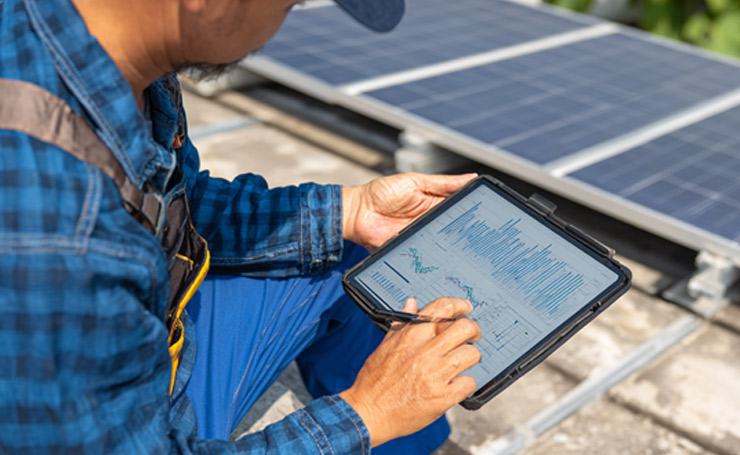
The formula is
System size (kW) = Annual energy use (kWh) ÷ (Daily PSH ✕ 365 ✕ Performance Ratio)
Have a look at this example.
Annual energy use: 10,000 kWh
Daily Peak Sun Hours: 5 hours
Performance Ratio: 0.8
- First, multiply PSH ✕ 365 ✕ Performance Ratio = 5 × 365 × 0.8 = 1,460
- Now, divide energy use by this value = 10,000 ÷ 1,460 = 6.85 kW
So the system size you need is 6.85 kW.
Step 4: Translate kW into Solar Panels
Each solar panel has a wattage rating, commonly 350 to 400 W. The formula to calculate the solar panels needed for a home is
Number of panels = (System size kW × 1000) ÷ Panel wattage
Let’s solve it using the answer of the example mentioned above (6.85 kW).
- Assume the panel wattage is 400 W. The calculation will look like this:
(6.85 × 1000) ÷ 400 = 6,850 ÷ 400 = 17.1 panels
So, the number of panels you need is 17 (rounded up).
Factors that Influence Panel Count
Keep the following factors in mind when calculating panels for your residence.
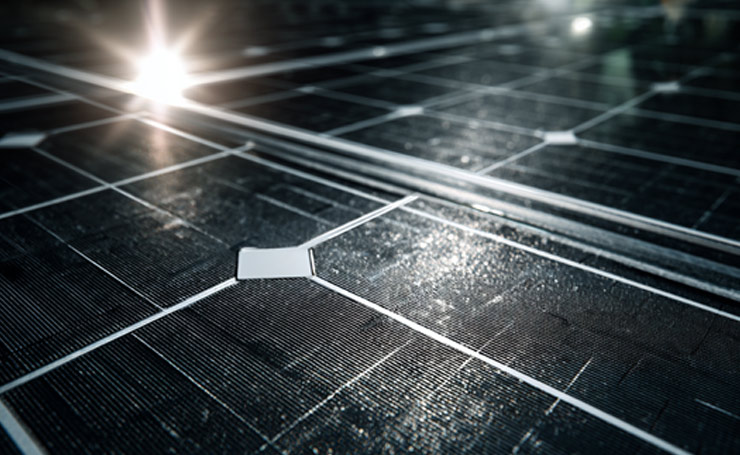
Solar Panel Efficiency and Degradation
High-efficiency panels (20%+) generate more electricity in less space. The standard panels start degrading at around 0.5% per year. You need to plan ahead for 20 to 25 years.
Roof Orientation, Tilt, Azimuth, and Shading
South-facing roofs get the most sunlight and are ideal. East and west-facing roofs also work, but with less efficiency. The tilt angle of your roof should be equal to your latitude.
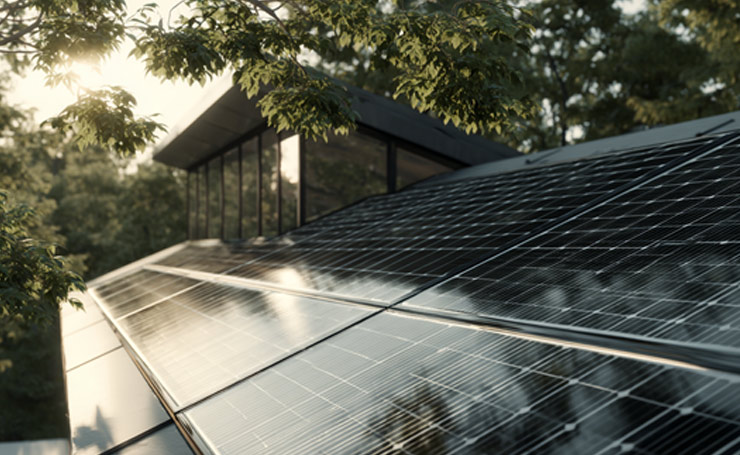
Keep in mind that shading from the chimney or trees impacts the energy output significantly. To minimize shading loss, use microinverters and optimizers.
Local Climate and Temperature
If you live in a cooler region, you can get improved efficiency as panels stay close to their optimal working temperature; otherwise, they tend to lose output when they get too hot.
In cloudy regions, the peak sun hours are fewer. Therefore, you might need a larger system to produce energy equal to the system installed in a sunny region.
Inverter Size and Performance Ratio
Inverters handle about 80 to 120% of the power your solar system produces. Undersizing (going for 90 to 100%) can be more cost-effective and still capture most of the energy. Oversizing can help you with the occasional surges.
Storage
If you are planning to go off-grid or need backup power during outages, you will need additional panels to generate electricity for immediate use and to charge batteries. It will increase the overall solar system size.
Net Metering
If your system is connected to the grid, any extra electricity goes back to it, and you earn credits. This means you do not need a bigger solar system, as the grid acts like a “virtual battery.”

However, without net metering, you need a bigger system to power your home at night.
Solar Installation Layout and Area Per Panel
Roof shape, orientation, and obstacles like chimneys and vents can affect the layout of the panels. Sometimes, installers leave space between rows to prevent shading from one panel to the next, which may increase the roof area needed.
Real-World Examples
Let’s understand the calculation we learned for the number of panels above with some real-world examples.

Average Home (1,000 kWh per month)
Let’s say a house in the sunny climate uses 12,000 kWh annually. With 5 sun hours every day, you will need a solar system of 8.2 kW. Using 400 W panels, you will roughly need 21 panels in total.
Larger Home (2,000 kWh per month)
For a large house in a cloudy region, the annual use of energy is 24,000 kWh. It gets 4 sun hours per day, which will make the system size around 20.5 kW. With 400 W panels, your house needs 51 panels in total.
Off-Grid with Storage
For an off-grid house that uses 900 kWh of electricity per month, you need to increase the size of the system for more battery storage. The system size comes to about 9.3 kW with 5 sun hours per day, and adding 25% extra for charging.
Using 400 W panels, this equals roughly 24 panels in total. You will also need a 30 to 40 kWh of storage for a full day backup, as a 10 kWh battery can be quite small.
Tips to Optimize Your Solar System
- Always choose high-efficiency modules, meaning fewer panels but more power.
- Set the panels on your roof at the right orientation and tilt to capture maximum sunlight.
- To reduce shading loss, opt for microinverters and optimizers.
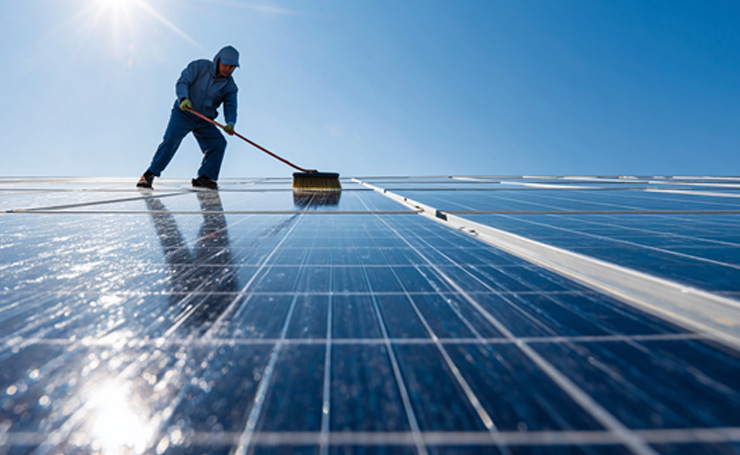
- Make sure to use your high-energy appliances, like dishwashers and washing machines, during sunny hours.
- Keep your panels clean for optimal performance.
Common Mistakes to Avoid
- Ignoring future electricity demands, like buying an EV or expanding appliances.
- Oversizing the system beyond local net metering rules, as you will not get credits for extra electricity.
- Failing to account for panel degradation, which slowly reduces efficiency and power production.
- Installing the system on shaded roofs results in low energy production.
- Selecting the wrong inverter size can result in inefficient system performance and energy losses.
Final Thoughts
The answer to “how many solar panels do I need?” is simple. It depends on your energy consumption, sun hours, roof layout, and panel wattage. For many residences, the range is 15 to 25 panels. However, you need to do proper calculations to get the exact number.
When done right, your solar investment will last you decades, saving thousands on electricity bills.
Want to know more about sustainable energy solutions? Visit Green Energy Insights for more in-depth guides.
FAQs
How do I calculate the required number of Solar Modules for my House?
The formula to calculate the number of panels needed for your residence is Annual energy use (kWh) ÷ (Daily PSH × 365 × Performance Ratio) ÷ (Panel wattage ÷ 1000).
How many Solar Panels are required for an Average Home?
An average home in the US using 10,000–12,000 kWh per year needs 16 to 20 panels rated at 400 W each. However, the exact number depends on your location’s sun hours, roof orientation, and panel efficiency.
What is the Role of Performance Ratio in Solar Size Calculation?
The performance ratio represents system efficiency after accounting for real-world conditions, such as temperature, dust, and inverter inefficiency. The typical PR range is 0.75 to 0.85. The higher number means that your system performs well, reducing the need for more panels.
How Long Do Solar Panels Last?
Most solar systems last around 25 to 30 years. The solar module output reduces by 0.5% every year due to natural degradation. After 25 years, your system may still generate 85 to 90% of its original energy capacity.

